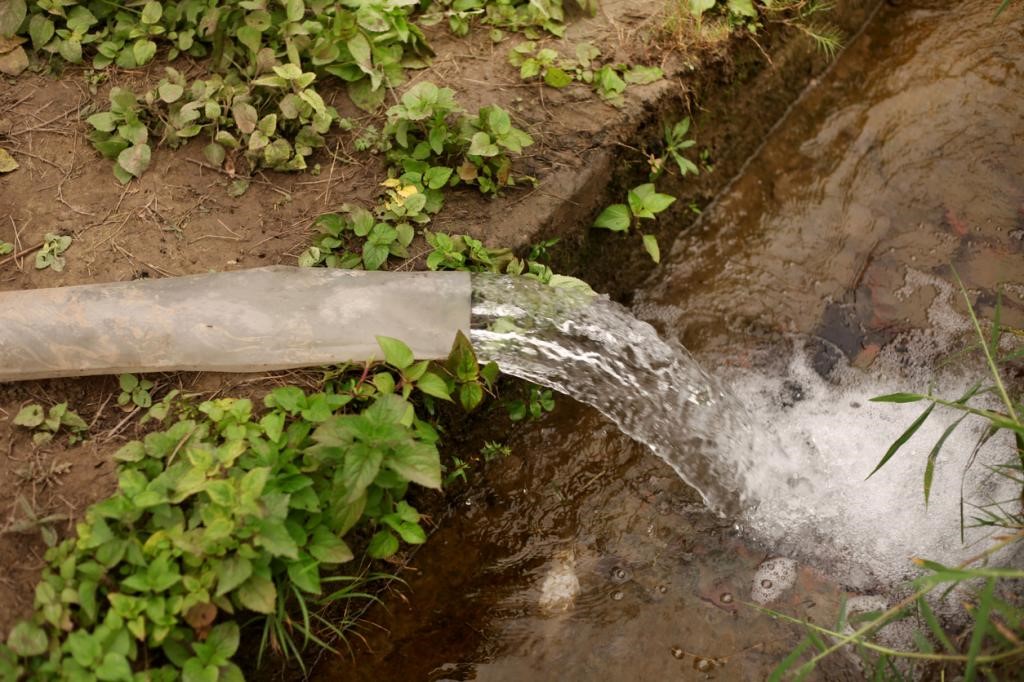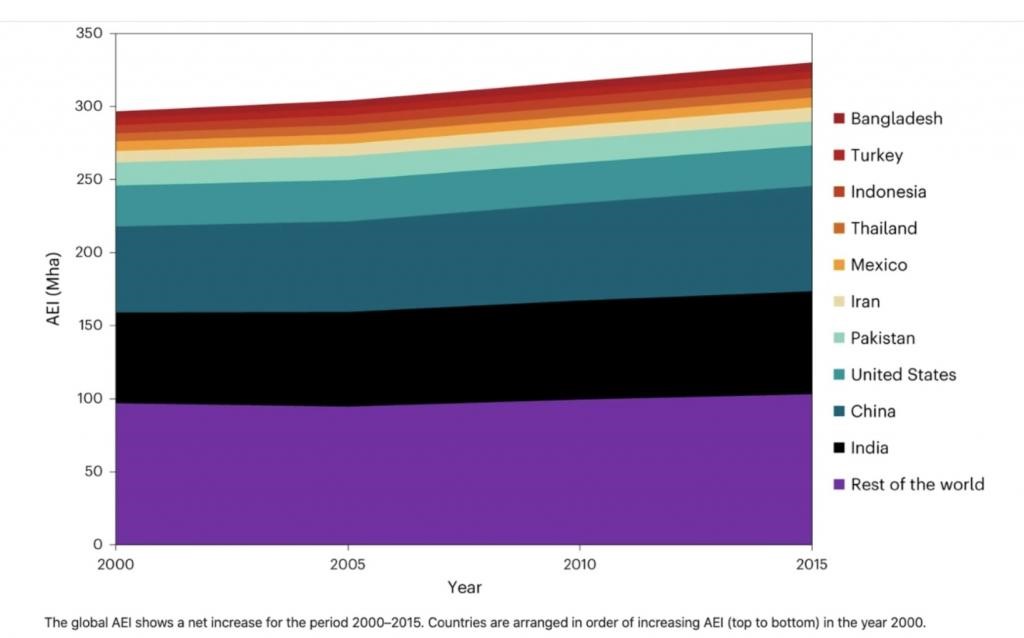Description

Disclaimer: Copyright infringement not intended.
Context
Over half of the 21st century irrigation expansion has been in water-stressed regions; India accounts for 36%: Study
Details
Key Findings
- The expansion of irrigated agriculture has increased global crop production but resulted in widespread stress on freshwater resources.
- Ensuring that increases in irrigated production occur only in places where water is relatively abundant is a key objective of sustainable agriculture and knowledge of how irrigated land has evolved is important for measuring progress towards water sustainability.
- A spatially detailed understanding of the evolution of the global area equipped for irrigation (AEI) is missing.
- In this study, researchers used the latest subnational irrigation statistics (covering 17,298 administrative units) from various official sources to develop a gridded (5 arcmin resolution) global product of AEI for the years 2000, 2005, 2010 and 2015.
- They found that AEI increased by 11% from 2000 (297 Mha) to 2015 (330 Mha), with areas of both substantial expansion, such as northwest India and northeast China, and decline, such as Russia.
- It was found that more than half (52%) of the irrigation expansion has taken place in areas that were already water-stressed in the year 2000, with India alone accounting for 36% of global unsustainable expansion.
- These findings provide new insights into the evolving patterns of global irrigation with important implications for global water sustainability and food security.
Changing patterns of global irrigation
- Through a spatially detailed understanding of the evolution of the global area equipped for irrigation (AEI), since the start of 21st century, , showed that from 2000 to 2015, this area increased by 11 per cent – from 297 million hectares in 2000 to 330 million hectares by 2015.
- This included areas of both substantial expansion, such as northwest India and northeast China, and decline, such as Russia.
- This net increase was the result of a 65 mha gross increase in some areas and a 32 mha gross decrease in other areas.
- The countries in which irrigation expanded (on net) the most were China (12.8 mha) and India (8.5 mha) and a major reason behind this was the increasing investment in irrigation projects to maintain food self-sufficiency.

- The research classifies water stress as the result of either green water stress (GWS), when rainfall is insufficient to meet a crop’s water requirement and supplementary irrigation is needed, or blue water stress (BWS), when renewable surface and groundwater availability (that is, total availability after accounting for environmental flows) is insufficient to meet irrigation water demand.
- Of the countries with the largest AEI in 2015, India and Pakistan have seen the most unsustainable expansion, with 86 per cent (12.1 mha) and 87 per cent (1.53 mha) of the gross expansion in AEI, respectively, taking place in locations that were already experiencing BWS.
- In the case of BWS, expansion of irrigation infrastructure can lead to enhanced depletion of aquifers and streamflow.
- In the case of GWS, expansion of irrigation infrastructure can be a valuable strategy for buffering against variations in rainfall, provided that blue water resources are sufficiently available.
- There were also countries in which most of the AEI expansion was sustainable (from the perspective of water resources), such as Brazil (3.4 mha, 96 per cent of the total expansion was sustainable), Indonesia (0.9 mha, 76 per cent), Peru (0.8 mha, 94 per cent), Italy (0.3 mha, 85 per cent) and France (0.2 mha, 88 per cent).
Need for sustainable Irrigation
- The global population is projected to increase to over 10 billion people by 2050 and food production will need to increase substantially to meet the associated food demand of the growing population.
- Because increasing the amount of cropland area would mean the conversion of forests and other ecosystems, intensifying agriculture on existing croplands by sustainably increasing irrigation and other inputs is a promising potential alternative.
- While irrigated areas account for 24% of croplands, roughly 40% of global food production is from irrigated croplands.
- In addition, over 90% of humanity’s consumptive water use is used for irrigated agricultural production.
- Depending on the relative water demand and availability in a location, this extensive water use can alter the water cycle, deplete aquifers and surface water bodies, increase water stress and escalate competition for freshwater resources.
- Given the critical role that irrigation will probably play in meeting future food demand and the highly heterogeneous nature of water availability and demand.

Irrigation in India
- Irrigation in India includes a network of major and minor canals from Indian rivers, groundwater well based systems, tanks, and other rainwater harvesting projects for agricultural activities. Of these groundwater system is the largest.
- India's irrigation is mostly groundwater well based. At 39 million hectares (67% of its total irrigation), India has the world's largest groundwater well equipped irrigation system (China with 19 mha is second, USA with 17 mha is third).
- About 51% of the agricultural area cultivating food grains is covered by irrigation. The rest of the area is dependent on rainfall which is most of the times unreliable and unpredictable.
|
PRACTICE QUESTION
Consider the following statements:
1.India has more arable area than China.
2.The proportion of irrigated area is more in India as compared to China.
3.The average productivity per hectare in Indian agriculture is higher than that in China.
How many of the above statements are correct?
- Only one
- Only two
- All three
- None
Answer 2
|











